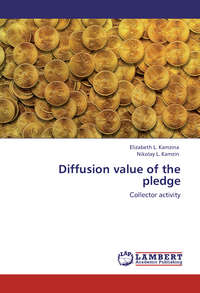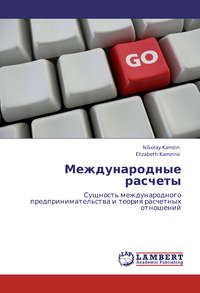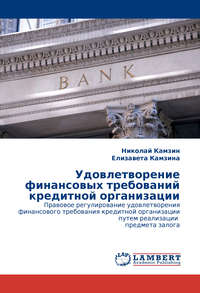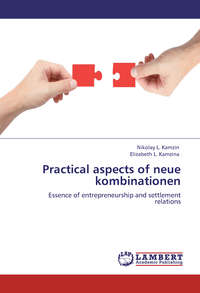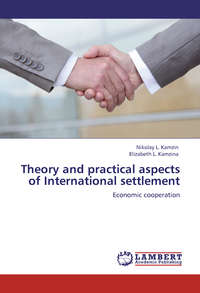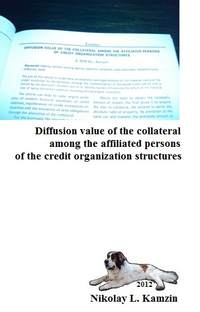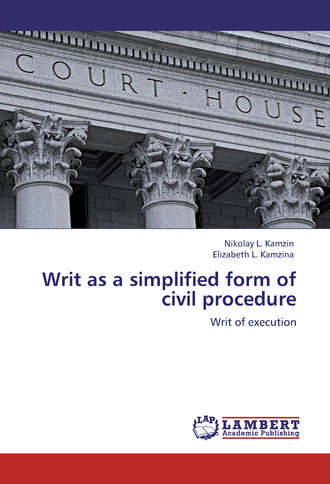
Полная версия
Writ as a simplified form of civil procedure. Writ of execution

Nikolay L. Kamzin, Elizabeth L. Kamzina, Oksana Kamzina
Writ as a simplified form of civil procedure. Writ of execution
Introduction
From the content of the concept of «social contract» (Hobbes), in our minds is modeled following picture – people in a state of «Bellum omnium contra omnes»[1](the war of all against all), based on the basic instinct of «self» conclude an agreement on the formation of the NGO – State in which they, as founders, become citizens. The state provides them a stable and peaceful coexistence and development, and they support the functioning of the state through education of management and implementation mechanisms of power, through the funding of the structure.
Mechanisms for the implementation of government (the main issues addressed in the state) – the rules of conduct in relation to the management of social processes. Governments and citizens – subjects of these relations. Content of their powers and are of corresponding security measures.
With the development of the state, it highlighted the scope of citizens, there are external contacts. Citizens are becoming more of freedom in their activities because of their presumption civilized behavior. And the state due to the presence of an obligation arising from an «agreement» provides the mechanisms to maintain stability.
The Company was formed, and secondly, due to the proprietary instincts of man (first of all, thanks to self-preservation instinct). Д.В. Дождев on the contumacy property and personality, wrote: «The property constitutes the subject of legal communication – free individual, providing him financial independence»[2].
The right of ownership is the most important concept. Legislator in the Basic Law is reflected in Part 2 of Art. 8 and Part 1 of Art. 35.
According to Part 3 of Art 35 Russian Constitution, no person shall be deprived of his possessions except by court order. To implement the law properly, you need a mechanism that in view of the characteristics of the violated rights would restore balance to the relationship.
The relevance of the research topic due to the fact that the institution of a court order and is by this mechanism. This is a simplified view of production cost in the aspect of time and money, undeniable. With the help of a violation of law arising out of legal relationships that are settled in private, and some other method, is drawing attention of the state and claimed by the creditors to recover from the debtor's money or personal property.
In the author's attention is focused on the following issues: the history and development of the injunction and its essence, the base issue the injunction, writ stage of production.
The topic chosen by the author due to the fact that the implementation of the writ of the Institute is very common in practice, especially in the present reality. At the stage of the economic boom was reversed production, which certainly does not negate the right of the claims of creditors against debtors in default.
The object of research – Institute of injunction as a kind of judicial decisions on certain civil legal cases to the absence of a dispute between the parties.
Purpose – to explore the history of the institute injunction, as a form of summary proceedings, to determine its concept and essence, the structure of the injunction as the court decision. Analyze reasons issuance of the writ. Select and explore stages of production clerk, as a mechanism for implementing the writ of the Institute.
Predetermined objective need of the following tasks:
– explore the writ in the historical aspect;
– define the concept and essence of the writ;
– define the structure of the injunction as the court decision;
– identify and analyze reasons issuance of the writ;
– identify and explore the stage production clerk.
The extent of investigation of themes and terms of references: the minds of humanity modeled different mechanisms of regulation of relations in society, including ways to resolve situations that violated the right of one of the subjects. Explorations of these issues are devoted to the works of many scholars that present different positions. A valuable source for the preparation of the study were the work of such famous scientists as: П.В. Алексий,В.Н. Аргунов, М.В. Арканников, Ю.А. Грибанов, Л.П. Григорьева, О.Н. Диордиева, И.В. Емельянова, С.К. Загайнова, К.П. Змирлов, О. А. Исаенкова, В.А. Козбаненко, М.И. Костоева, Е.П. Кочаненко, Г.А. Малумов, К.И. Малышев, А.В. Маркина, Н.Н. Масленникова, И.Б. Морозова, И.Б. Новицкий, И.А. Покровский, В.И. Решетняк, Т.А. Сальван, А.Е. Самсонова, Т.А. Сивак, В.Н. Татищев, М.К. Треушников, Д.А. Туманов, М.А. Черемин, И.Е. Энгельман, А.В. Юдин, В.В. Ярков.
Theoretical and methodological basis of study is determined by modern methods of cognition of phenomena and processes of legal validity. The study used as a general scientific (dialectical system) and private (formal and legal, logical, and comparative legal) methods.
The theoretical significance lies in the research institute of the court order in a historical perspective, in terms of its appearance and development, the definition of its essence and necessity of society and state.
The practical significance of the study is to analyze the grounds for issuing the writ and the writ of stages of production.
In the text of the study includes a list of references containing 65 items.
Chapter 1
The concept and essence of mandative process
1.1. Bench warrant in the roman and medieval European law
The history of the institute injunction in civil proceedings is durable enough. He was known as the Roman law and jurisprudence of the middle Ages.
Simplified methods of resolving civil legal col-manifolds have been developed as a result of a long historical development. In ancient Rome, along with the usual civil procedural procedures used special forms of legal protection of the violated right, is a modification of the administrative and legal action. One of these forms was the interdict, in other words, consular or praetor orders by which the state power to intervene in civil matters.
Consul (Pretoria) conducted a special investigation, referred to as «causae cognitio», and if admitted, that there is any violation, order the offender to follow the imperative unconditional requirement[3].
Initially, the praetor gave the interdict after investigating the facts, and therefore interdict was an absolute and categorical order. But as the number of cases began to give praetor interdict without checking the facts, in the form of conditional orders. Thus, they began to have effect only when confirmed by the facts referred to by the applicant. Interdiction can be challenged. If the person, against whom the interdict was issued in the comfort of Pretoria, disputed the interdict and demanded appointment of a judge, this requirement is satisfied. The trial could lead to confirmation or interdict (and then he turned from a conditional order in unconditional), or to justify the defendant[4].
Medieval European law was characterized by simplified administration of justice, arising, probably due to the influence of Roman law, on the other hand, since the objective is a necessity to save time and money. К.И. Малышев said: «Already the medieval trading cities of Italy had to develop their special forms of abbreviated procedure for matters of trade, to collect on promissory notes and other indisputable documents for the arrest of debt penalties, etc. This division process in normal and reduced penetrated and then in other European countries, and in the subsequent history can be seen a constant desire to generalize the reduced form, and to accelerate the entire production. It often happened that the short form was introduced into the law as an exception, but in practice it became the rule, but on the contrary, the ordinary legal proceedings – exception»[5].
The development of capitalist relations has caused the improvement of legislation, more and more detailed development of various legal institutions. In the 19th century in the procedural law of some European countries there are institutions on the undisputed foreclosure documents similar to writ proceedings. Considering the system of court orders and remind production in the Western European legislation, К.И. Малышев singled out executive orders or unconditional (applied in the enforcement process – a writ of execution and summons of the performance) and conditional orders or reminders (served for the preparation of an order by a reminder). Issuance of these and other orders permitted by unilateral request of an applicant, without calling the defendant and without hearing his explanations. As a consequence, unconditional order could be issued only on the basis of acts that are enforceable or apply to the executive production, and conditional order, as a simple reminder to the debtor of the need to satisfy the requirements issued on all debts, regardless of the strength of the executive acts to which they are based.
A conditional order is an alternative command to the court that the defendant or performed some action, for example, paid the debt collector or, if there were any objections, said to them. If at a certain time of the dispute is not stated, the order addressed to enforcement. Conditional orders served to verify the indisputable duty and allowed to quickly restore the violated right, while avoiding the numerous stages of manufacture of claim.
In an all-German during the proceedings in the case of procrastination indisputable claimants were overcome by the use of so-called summary proceedings. «The combined processes – said I.E. Engelmann, – meet the needs of accelerating recovery that, in contrast to the usual, decision or order of payment, under penalty of causative execution, decides on the basis of the presented document without exporting and listening to a debtor who is granted only to defend themselves clear evidence of payment or proof of the spuriousness of the document». Thus, the decision could be made only on the basis of written documents, reliability is presumed[6].
In England, the procedure of Summary in a civil suit was covered by the Rules of the Supreme Court. Such production existed in the framework of claim and could be applied where the plaintiff urged the court to the fact that, firstly, the cause of action cannot be refuted by the defendant, and, secondly, the claim by the defendant cannot be challenged. Between the parties should not be any significant dispute about the actual circumstances of the case or the legal. The plaintiff presents the court a written statement which justifies his belief that the defendant cannot challenge presented demands, presents arguments proving grounds the suit and the amount of money it requires recovering, asking for the lawsuit in a simplified manner. A copy of the incoming application is sent to the defendant, who may challenge him to prove that he has to challenge himself brought by the suit.
Writ as a specific judicial action existed and exists in many countries (in Germany – Mahnverfahren, in Austria-Hungary – Mandatverfahren, Italy – Mandatum cum clausal; in England – Summons in a special form, in France – la procédure d'injonction[7]) and the essence of it in different countries interpreted differently.
The system of orders and production in the Western European remain legislation, К.И. Малышев singled out executive orders or unconditional and conditional orders or reminders. First used in the enforcement process. These included a writ of execution and summons of the performance. The latter served to remind the debtor of the debt and the recovery of the latter.
Issuance and conditional and unconditional place on a similar procedure, but an unconditional order could be issued only on the basis of acts that are enforceable or apply to the executive production, and the conditional order, as a simple reminder to the debtor to satisfy the requirements issued on all debts, regardless of executive force acts on which they are based. A conditional order was a so-called alternative court order the debtor to pay the debt collector or, if there were any objections, said to them. If at a certain time of the dispute is not stated, the order addressed to enforcement[8]. The Hungarian Justice writ is treated quite differently and is a special sanction in the event of non-defendant's first trial. This, in essence, an analogue of extrajudicial charges and is characteristic of many systems of justice in the middle Ages. As the В.И. Решетняк, a form of court adjudication exempt from the duty to expose to scrutiny the arguments of the applicant (creditor), call for evidence, examine them to make efforts to establish the actual circumstances of the case[9].
Foreign practice has developed, at least three approaches to understanding the essence of judicial orders: as an executive document (an unconditional order), as a reminder to the debtor of its obligations to the lender (conditional orders), as a sanction for failure to appear at the hearing.
Writ in the Russian civil process has features of both conditional and unconditional order. On the orders of his conditional combines a relatively simple procedure cancellation, but with the absolute – that the court order is also the executive document.
But the characterization of the injunction as soon as the dual unity reminder to the debtor's obligation and the agenda of its enforcement cannot reveal his identity. Entity may be disclosed only in case when you consider its dual nature as a court of first instance in which it is allowed on the merits, and as an executive document, on which is punishment in the manner prescribed for the execution of judgments.
1.2. Evolution of mandative process in Russia
History of development of analogues of writ of production in Russia dates back to the adoption in 1864 of the Charter of Civil Procedure. But when it comes to simplifying the process of Russian civil law in a broader sense, we should mention the earlier period – 14th and 15th century, when the desire for opportunities to simplify the process led to the emergence of so-called extrajudicial Institute of ratification. Simplification was that in the adversarial process that begins on the complaint of the plaintiff (the petition), in certain situations, the case could be resolved on the merits without a special act of the judicial process, evidence and trial. The function of such an act performed without trial diploma. Information about it is found in Pskov and Novgorod Judgment charters in 1497 and Court book 1550 and other acts of the era.
In the literature, acknowledged that extrajudicial charter was a court decision handed down without trial on the defendant's failure to appear at the hearing and stated the loss of the case by the defendant. The plaintiff claimed the right as if the court had taken place.
В.Н. Татищев comment Text Court book 1550, noted that the issue of extrajudicial consequences of ratification was that the plaintiff received a letter the defendant had «the power thereof, everywhere catch before the court and submit to «правежа» and punishment» and «beat him at ease and rob, kill not only the house and not destroy». The last statement is, in fact, expressed in an archaic form of the right to enforce the debtor, the state provides to the creditor at last granted extrajudicial literacy.
The so-called «extrajudicial accusation» and called for the Cathedral Code of 1649, the rules which determine in more detail the conditions under which could be issued without trial and indicate that the extrajudicial could be issued and the defendant fails to appear at a hearing of the plaintiff.
Condemnation without trial, executed without trial in the charters, is the first step of the Russian legislator towards the creation of special rules of procedure – and reduced cost compared with the general rules. The next step was taken in the second half of the 19th century.
The Charter of Civil Procedure (GHS) in 1864 included reduced production of indisputable rules of affairs in the manner which necessarily dealt with the matter:
– on claims made on credit products and supplies, hiring of houses, apartments and all kinds of facilities, hiring servants at all production work artisans, craftsmen, day laborers and the like;
– at the request of the performance of contracts and obligations;
– claims about giving and receiving to save money and other property;
– claims for compensation for damages, losses and «самоуправное» occupation, when they do not involve disputes over the ownership of real property;
– disputes and requests that arise during the implementation of decisions;
– disputes about the privileges;
– in actions for compensation of victims of accidents and office workers in the factories and their families;
– disputes and complaints for enforcement.
In order to be considered in short all things at all, if it is agreed by the court and have not seen this particular obstacle. By order of the rules of the reduced characteristic in common, but with few exceptions, which were limited primarily to shorten the proceedings and the obligations of the parties to immediately submit the documents on which they base their rights: the plaintiff – if the lawsuit petition, the defendant – not later than the first meeting in the case.
Reduced production order has been unsatisfactory and too difficult in practice to speed up the proceedings on the undisputed liens. Measures were taken to remedy the situation. December 29, 1889 has been published rules for the production of rural chiefs and municipal judges. Earthen chiefs and municipal judges granted the right to manufacture their powers, to pay to perform acts without judicial review.
Causative execution subject to:
– acts of the serfs and notary, the acts of the payment of money or the return of things and other movable property;
– the employment contracts of real estate, certified or committed by the same procedure.
Recovery of the causative procedures on these matters was allowed only in cases where:
– acts on which it is based, committed or witnessed by the established order;
– the performance on them was not delivered in the very act in reliance on such conditions, the occurrence of which must be proved previously by the applicant, that is, if an act is beyond question.
In 1912, the rules of the causative version were introduced in the GHS. Chapter 15 GHS «On the performance of the causative acts» was developed based on standards set forth in the Rules for the production of rural chiefs and municipal judges. Commenting on the GHS, К.П. Змирлов noted on the causative form of enforcement of acts: «A distinguishing feature of the cases, so-called undisputed penalties is that the production of them between the parties as there was no dispute, and they are conducted solely for the receipt of the order of the causative performance of an obligation by the defendant. Under such conditions, in view of simplicity and clarity of the legal relationship of the parties, subject to strict procedural forms established in order to protect the interests of the plaintiff and defendant, it is unnecessary and not only needlessly alienates period of performance, but in vain, and both the claimant's burden, as well, and bona fide defendant. From this point of view of the above categories exclude cases from the trial, with the replacement of the last direct appeal expired liabilities to the causative enforceable in all respects to be preferred. In the same example and persuade Western Europe, where it started successfully applied almost everywhere, as well as some experience and national legislation, since the implementation of the causative execution of acts of «земскими» precinct chiefs and city judges does not cause any complaints by whom»[10].
By execution of CSA causative acts was «the judge's ruling, without calling and listening to explanations of the defendant, the immediate execution of taken over the defendant in the act of commitment, time of execution of to whom has come» and subject to the execution of the CSA:
– serfs, notary and certified by the rules of a notary of the acts of the payment of money or the return of things, or other movable property, if the execution of the aforesaid obligations in these acts were not made subject to such conditions, the occurrence of which was to be pre-proved by the plaintiff;
– committed or witnessed in the same order of real estate employment contracts in relation to the obligation to clear the employer or rent property consisting of hiring due to the expiration of employment and the obligation of payment of wage money;
– protested bills;
– Acts of agreements certified under the special rules on compensation of victims of accidents due to the workers and employees, as well as their families.
The desire for simplification of the civil procedural form was characteristic of the Russian civil process after 1864 and led to the beginning of the 20th century to the emergence of legislation governing the protection of the rights detailed in a simplified form.
High level of development of the theory simplify the civil procedural form was in the works of pre-revolutionary scientists-procedure causative and effective execution of acts determined the binding of a similar institution in the first Soviet of the RSFSR Code of Civil Procedure 1923. It was first introduced the term «court order». In the explanatory memorandum to the draft Code stated: «Art. 210 of the Draft Code of Civil Procedure allow a special procedure for consideration in the form of so-called issue of writs for the simplest cases, based on fixed and not subject to appeal documents. Issuance of orders made without summoning the parties and without a public affairs individually parse the people's judge, which is sufficient to produce an authentic document». According to Art. 210 orders were used to collect the money or the requirements for the return or transfer of property-based:
– for contested bills;
– the acts for which you have the mandatory notarial certification or order the commission, subject to compliance;
– the global transactions of any kind committed by judicial order;
– agreements on the amount of content to children and spouse entered into in accordance with the Code of Civil Status;
– on pay-books on wages.
However, beginning development of the institute writ of production in the Soviet civil trial was not as successful as the development of simplified forms of judicial procedure in pre-revolutionary Russia. Following the publication in 1926 of the provisions of Notary Public number of documents on which the writs were issued, declined and later Chapter 24 «On the issue of writs for the acts» were completely excluded from the Code of Civil Procedure of the RSFSR.
The Institute was transferred to the jurisdiction of notaries, which was transformed into Institute executive inscriptions – a notarial act, aimed at giving the executive power, and debt payment documents. This institution exists to this day. The order of the executive commission of the inscriptions is regulated by the Fundamentals of Legislation on Notaries.
Soviet jurists recognized the commonality of the legal nature of the legal institutions of the writ and writ of execution, and noted that notaries in the commission of the inscriptions were guided by the executive regulations for the extradition orders set out earlier in the Code of Civil Procedure.
In the legal literature has raised the question of the causes that led to the transformation of the institute injunction.
Н.Н. Масленникова, notes that the reduction of the practical value of the injunction and its subsequent clotting contributed to «a departure procedure law of Soviet Russia from discretionary, and competition began, the shift to state court procedural activity, the desire for strict regulation of all the really important things in public circulation»[11]. В.И. Решетняк believes that this institution, «focused on the functioning mainly in a market economy», could not be used «in the Russian reality, 30s – 50s of the 20th century, with its totalitarian regimentation of all spheres of civil turnover. Because of this, he had no place in the Code of Civil Procedure in 1964, and he was unreasonably long forgotten domestic legislation»[12].




